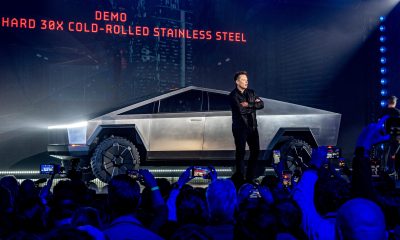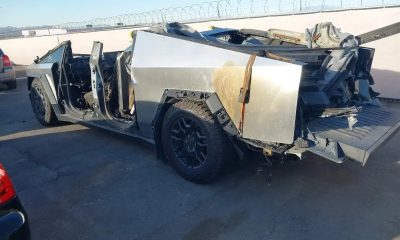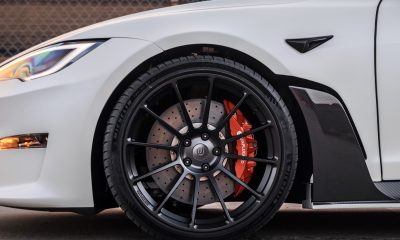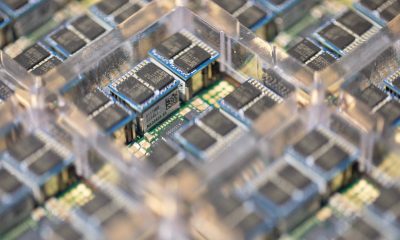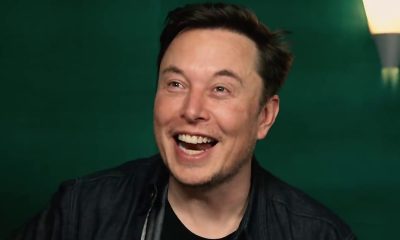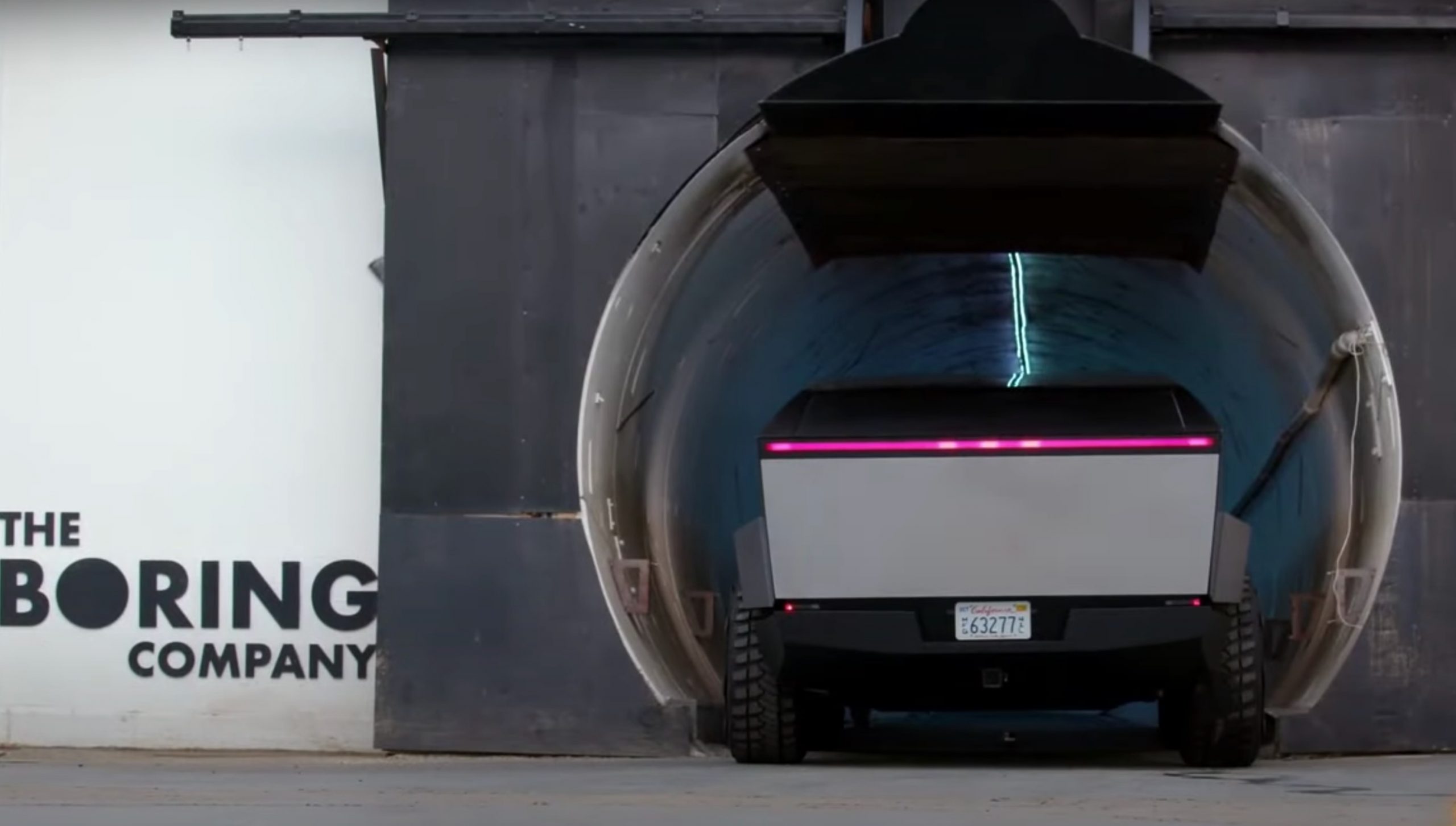
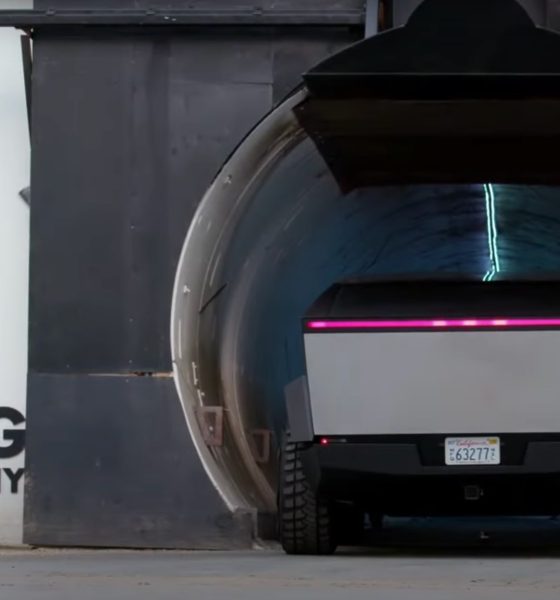
News
The Boring Co.’s projects are making transit departments rethink above-ground travel
The Boring Company’s underground tunneling projects are widely-appealing to Transit Departments and Authorities across the United States. Because of the sustainable tone of Elon Musk’s Boring Company, along with the efficiency of an Express-based system, agencies responsible for solving the issue of public passenger transportation are considering underground options more often than ever before. Above-ground public travel options, like Monorails or buses, are being ditched for underground options, and subways are outdated and not widely considered by these agencies.
Elon Musk’s underground tunneling venture has made it from California to Las Vegas, and now, back to California again, as the San Bernardino County Transportation Authority (SBCTA) is considering a new underground tunneling project from the Boring Company. Later today, on February 3rd, the entity will consider the Boring Company’s submission for an underground tunnel that would take travelers from several different locations to the Ontario International Airport, located in Southern California. While the Boring Company has already received the equivalent of preliminary approval from the Transportation Authority, more questions are being asked to secure the tunnel’s place in the densely-populated and traffic-heavy area of Southern California.
In September 2020, the SBCTA Board of Directors approved the release of a Request for Qualifications, seeking qualified entities to submit a Statement of Qualifications for a potential tunneling project in San Bernardino County. According to documents released by the SBCTA, the tunnel will run from the Rancho Cucamonga Metrolink Station to the Ontario International Airport, procuring a design-build and transitional operate-maintain methodology that will have the two transit systems running concurrently to complement one another.
The 31-minute ride from the Rancho Cucamonga Metrolink Station to the Ontario International Airport could be expedited thanks to a new Boring Company tunnel proposal. (Google Maps)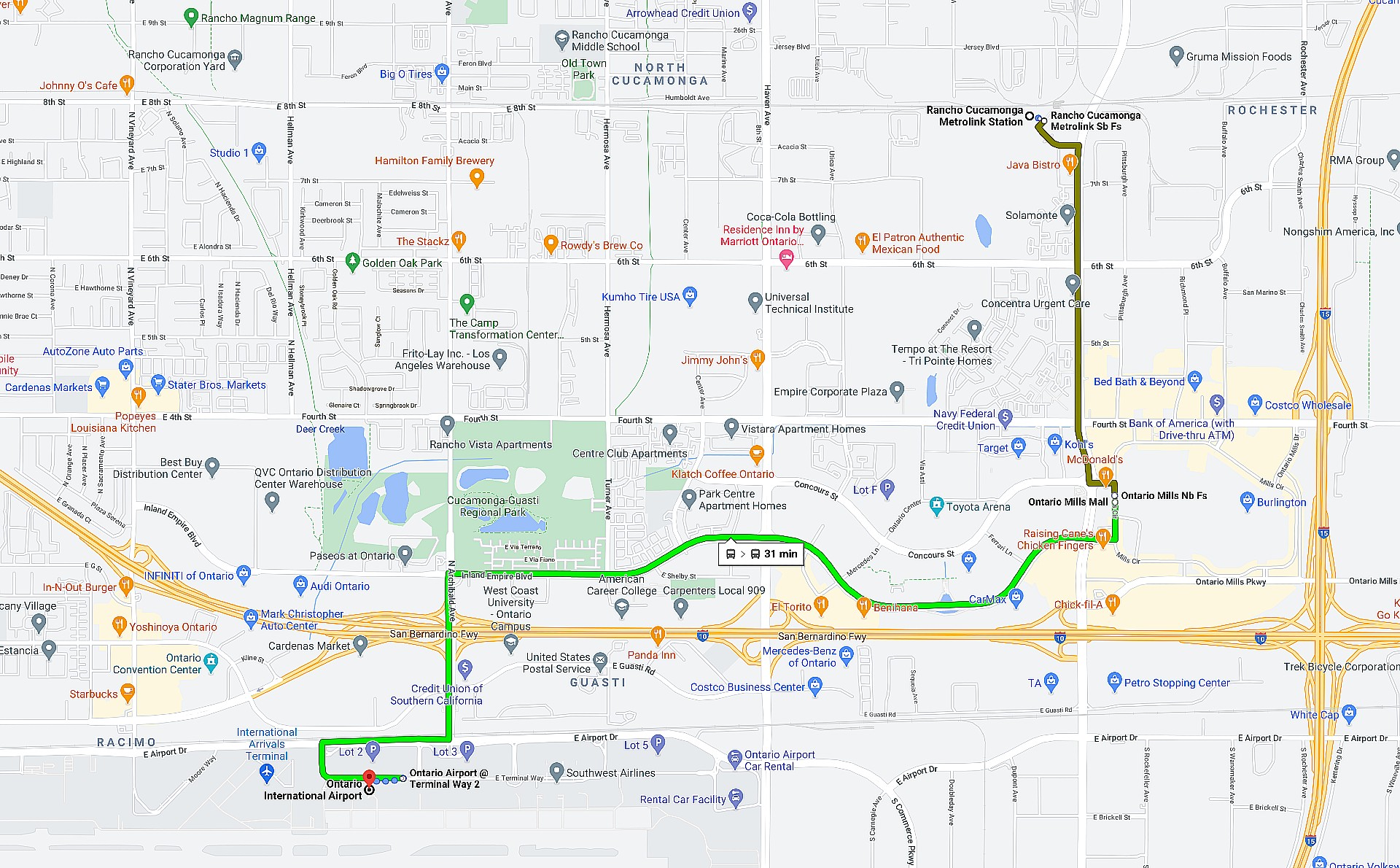
The only thing is, not many companies with expertise in tunneling stepped forward. And by not many, only one did: The Boring Company.
The SBCTA wrote:
“In response to the RFQ, one Statement of Qualifications (SOQ), from The Boring Company, was received on November 30, 2020. A review panel was assembled involving a technical review team and an executive oversight team consisting of representatives from the City of Rancho Cucamonga, the City of Ontario, the OIAA, Omnitrans, and SBCTA. The SOQ was deemed responsive and passed all the minimum requirements of the RFQ.”
After an initial assessment from SBCTA Board Members, the Boring Company met the minimum requirements to qualify for further scrutiny. The Boring Company’s Statement of Qualifications only received a score of 58/100. Still, more information regarding financing, timing, ridership, and how the system will operate in conjunction with the Rancho Cucamonga Metrolink Station will likely increase that score. These issues are set to be brought up during the Board of Directors meeting later today.
Ditching Above-Ground Systems for Underground Tunnels
Above-ground systems of transportation have been around for ages. Monorails, trains, and other large-scale passenger transportation systems have been aligned with cost-effective and efficient travel for decades, but a new era has come in thanks to Elon Musk. While many argue that the Boring Company’s system is a simple revision of a subway, it is far from identical. The Boring Company loops use Tesla’s all-electric vehicles for passenger transport, eliminating jam-packed, unsanitary, and oftentimes, uncomfortable situations where underground travel is offered.
Sitting in an automotive seat, likely joined by colleagues, or in some cases, complete strangers, is much more comfortable in a smaller setting, especially as the COVID-19 pandemic rolls on. Additionally, the express-system eliminates the need for unneeded stops, decreasing total travel time.
While the San Bernardino project seems to indicate that the Boring Company will work with an already-operational monorail system, other projects have completely abandoned the idea of using an above-ground Monorail system. One of the most notable is the Boring Company’s Vegas Loop. After the Las Vegas Convention and Visitors Authority (LVCVA) purchased the bankrupt Vegas Monorail system in 2020, it opened the door for the Boring Company to expand its possible tunneling to property exclusive to the Monorail.
The Boring Company has several other large-scale projects in the proposal stage, including one in Fort Lauderdale, Florida, and Chicago, Illinois. These projects are in the early stages and will be subjected to the speed at which local authorities move. Some agencies are quicker to get the ball rolling on public transit projects than others. For example, a tunnel between Baltimore and Washington D.C. would eliminate the need to travel on the Maryland Transit Authority’s Lightrail system, a cost-effective, but not time-effective, way to travel from suburbs of Baltimore County to the Nation’s Capitol. This project has been in a stalemate for several years but would expedite the travel time from Baltimore’s Camden Yards, home of the Orioles, to Washington. The Boring Company’s website indicates that an environmental review is pending.
Underground tunnels may be the way of the future, much like electric cars. At the forefront, a South African-born entrepreneur named Elon Musk is leading the charge, changing how human beings will travel from one point to another.
The San Bernardino County Transportation Authority’s Agenda is available below, with The Boring Company’s consideration beginning on page 13.
Tbc San Bernardino Tunnel by Joey Klender on Scribd
News
Tesla snags Lamborghini alum to help in newly entered market
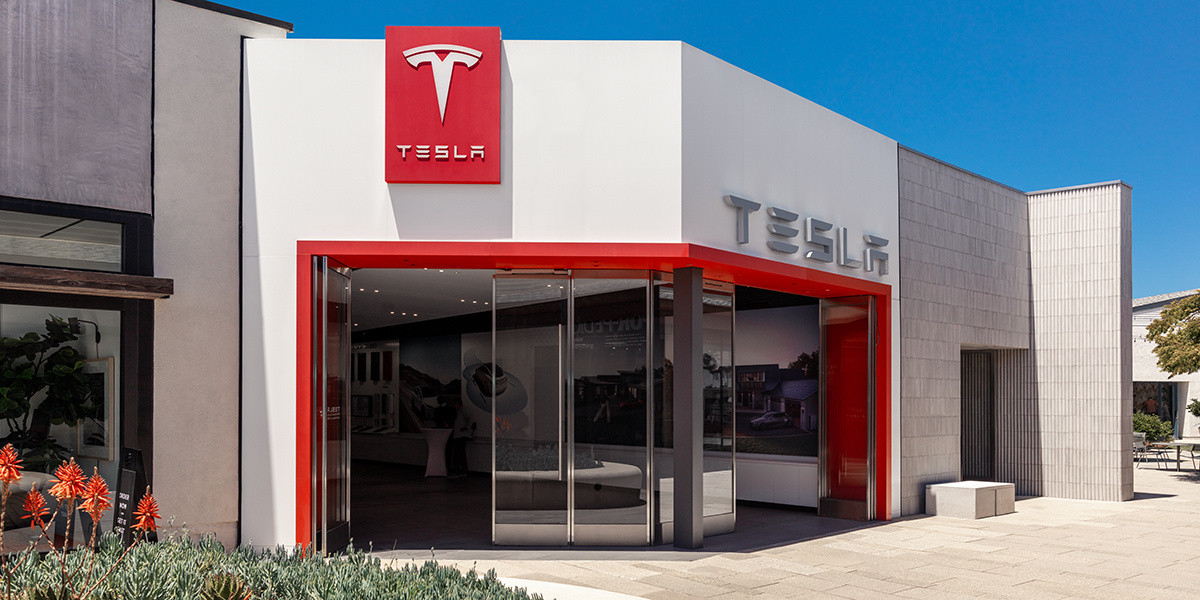
Tesla has snagged a Lamborghini alum to help with its entrance into a new market, which has proven to be an intricate situation for the automaker.
A report from Bloomberg states that Tesla has hired Sharad Agarwal, who was formerly employed by the Italian luxury carmaker, to run its operations in India. With Lamborghini, he was employed to handle operations in India.
Tesla launches in India with Model Y, showing pricing will be biggest challenge
Tesla has gone through quite a few different team members with its launch in India, starting with a few hirings a few years ago, well before the company actually committed to selling cars in the country.
The move helps Tesla streamline its executive decision-making process, as it previously had employees in India reach out to managers based in China, among other areas. Agarwal will be stationed in India and will handle the company’s operations.
Tesla’s mentality behind the strategy is to have local leadership, something that seems to cater to the market specifically.
Tesla had previously put Isabel Fan, the manager of Southeast Asia for the company, in the position. However, Tesla seemed to want someone who was more permanent and would be dedicated to India exclusively.
India has the largest population on Earth and has a massive automotive market for that reason. Tesla stands to gain a lot from a strong performance in India, and its clean energy vehicles could help with pollution of all kinds in the region.
Tesla’s path to entrance in the Indian market was a long one, as the company tried for nearly ten years to get into the elusive region. Back in 2016, CEO Elon Musk said Tesla “would love to be in India,” teasing the Model 3.
By 2017, Tesla had met with officials from the country, but tried to get import duties down to nothing from 100 percent.
Indian authorities denied Tesla’s request.
For years, Musk met with Prime Minister Narendra Modi to try and iron out a deal of some sort. Nothing truly came to fruition, at least until last year, when real movement started.
By 2024, India had introduced a strategy to reduce import duties for some companies, which was enough for Tesla to make a move. It is now 2025, and the company still has not committed to building a factory in the region. However, it is not completely out of the question.
News
Tesla Sentry Mode helps lock up drive-by shooting suspect in Seattle
“A nearby Tesla actually captured the video that showed a man crouched behind a vehicle firing gunshots. A lot of vehicles record, and officers know that Teslas, especially, record, so we use that video all the time in these instances.”
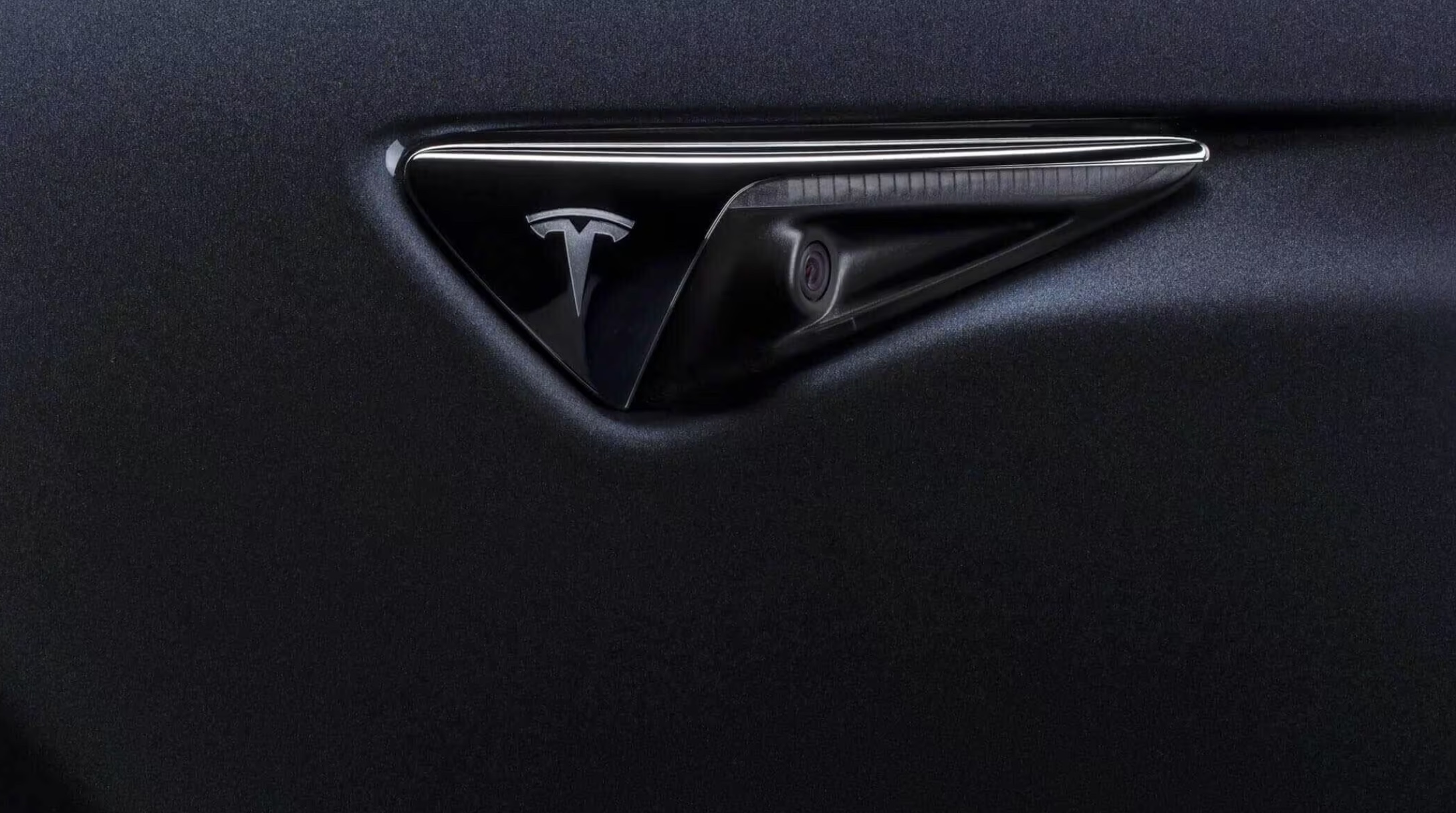
Police in Seattle, Washington, are crediting Tesla’s well-known Sentry Mode for helping find a suspect in a drive-by shooting case.
A 21-year-old was arrested for an alleged drive-by shooting in the Pioneer Square neighborhood of Seattle this past Sunday, and the leads on the case seemed to be slim.
However, a Tesla parked nearby was able to record the shooting, as well as the car that the suspect hopped in after the crime occurred. It helped police identify the person they were looking for.
Seattle Police Department Detective Brian Pritchard said to MyNorthwest that the Tesla was a critical part of finding the suspect and placing him under arrest:
“A nearby Tesla actually captured the video that showed a man crouched behind a vehicle firing gunshots. A lot of vehicles record, and officers know that Teslas, especially, record, so we use that video all the time in these instances.”
The Tesla footage helped the Police put the suspect into handcuffs about an hour after the crime was committed. They are currently charged with drive-by shooting and unlawful possession of a firearm.
Tesla Sentry Mode is a security feature the vehicle utilizes to help solve crimes like vandalism, but it is also a cool feature that has caught things like accidents and other incidents on camera.
Many people still do not know about it, including the many vandals who keyed or broke the windows of Teslas earlier this year, as people damaged others’ cars in an act of retaliation against CEO Elon Musk when he became involved in politics.
This is far from the first time Sentry Mode has helped Police Departments solve crimes. Last September, we reported on Oakland’s Police Department in California using Teslas near crime scenes to help solve cases.
Tesla Sentry Mode is Oakland PD’s secret weapon against rising crime
Sergeant Ben Therriault, president of the Richmond Police Officers Association, said, “We have all these mobile video devices floating around,” in reference to the Teslas that sit and capture nearly everything that surrounds them.
Sentry Mode has helped officers arrest a variety of suspects, including several people who were allegedly involved in the murder of a 27-year-old woman in Northern California.
Elon Musk
UPDATE: Tesla investors push Charles Schwab for Musk comp plan clarification
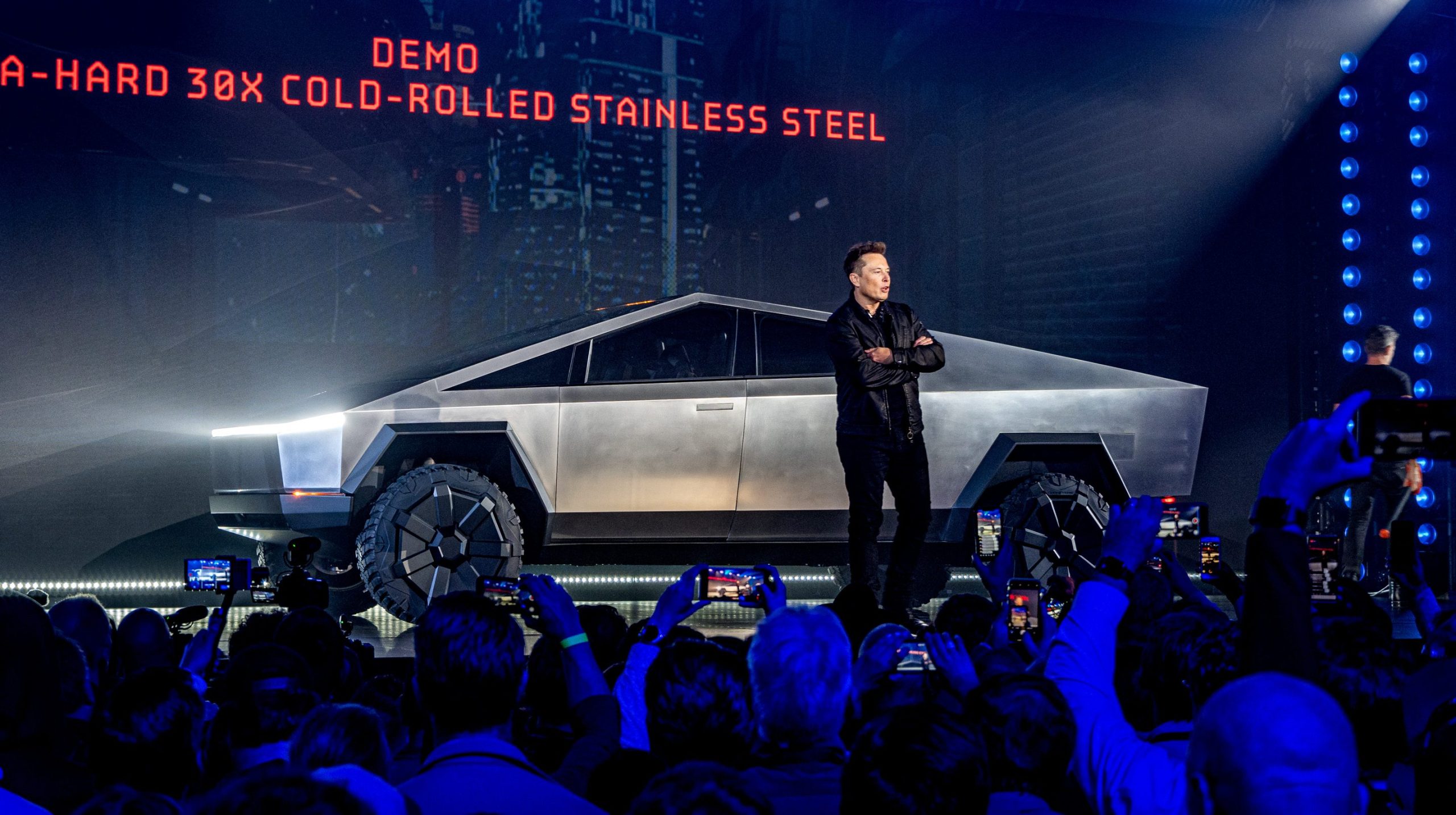
Update: 4:00 p.m. EDT – Charles Schwab has reached out to TESLARATI with the following statement, clarifying that it plans to vote FOR Musk’s compensation package:
“Schwab Asset Management’s approach to voting on proxy matters is thorough and deliberate. We utilize a structured process that focuses on protecting and promoting shareholder value. We apply our own internal guidelines and do not rely on recommendations from Glass Lewis or ISS. In accordance with this process, Schwab Asset Management intends to vote in favor of the 2025 CEO performance award proposal. We firmly believe that supporting this proposal aligns both management and shareholder interests, ensuring the best outcome for all parties involved.”
There have also been updates to the headline and various paragraphs to reflect this as well as accuracy.
Tesla investors are pushing Charles Schwab for clarification after it was expected to vote against CEO Elon Musk’s pay package.
Several high-profile Tesla influencers are speaking out against Charles Schwab, saying its decision to vote against the plan that would retain Musk as CEO and give him potentially more voting power if he can achieve the tranches set by the company’s Board of Directors.
The Tesla community appeared to see that Schwab is one firm that tends to vote against Musk’s compensation plans, as they also voted against the CEO’s 2018 pay package, which was passed by shareholders but then denied by a Delaware Chancery Court.
Schwab’s move was recognized by investors within the Tesla community and now they are speaking out about it:
Hey @CharlesSchwab – I need to speak with someone from Schwab Private Wealth Services this week. Please reach out via email, the mobile app message center, phone, or X DM.
Here’s why this is urgent: At least 6 of your ETF funds (around 7 million $TSLA shares) voted against… https://t.co/uSgPWnfTFc
— Jason DeBolt ⚡️ (@jasondebolt) November 3, 2025
If @CharlesSchwab doesn’t vote for Elon Musk’s 2025 CEO Performance Award plan, I’ll move all my assets to another brokerage. My followers, many of whom also hold assets with Schwab and collectively own at least hundreds of millions in $TSLA, may do the same.
I can’t in good… https://t.co/6iUU6PdzYx
— Sawyer Merritt (@SawyerMerritt) November 3, 2025
ready to help with the @CharlesSchwab exodus
— Gali (@Gfilche) November 3, 2025
At least six of Charles Schwab’s ETFs were expected to vote against Tesla’s Board recommendation to support the compensation plan for Musk. The six ETFs represent around 7 million Tesla $TSLA shares.
Jason DeBolt, an all-in Tesla shareholder, summarized the firm’s decision really well:
“As a custodian of ETF shares, your fiduciary duty is to vote in shareholders’ best interests. For a board that has delivered extraordinary returns, voting against their recommendations doesn’t align with retail investors, Tesla employees, or the leadership we invested to support. If Schwab’s proxy voting policies don’t reflect shareholder interests, my followers and I will move our collective tens of millions in $TSLA shares (or possibly hundreds of millions) to a broker that does, via account transfer as soon as this week.”
Tesla shareholders will vote on Musk’s pay package on Thursday at the Annual Shareholders Meeting in Austin, Texas.
It seems more likely than not that it will pass, but investors have made it clear they want a decisive victory, as it could clear the path for any issues with shareholder lawsuits in the future, as it did with Musk’s past pay package.
-
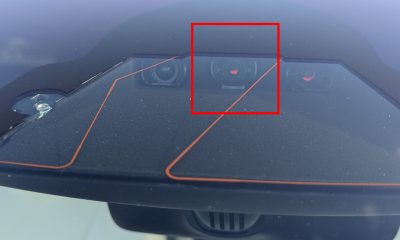
 News2 weeks ago
News2 weeks agoTesla rolled out a new feature with FSD v14 to fix a major complaint
-
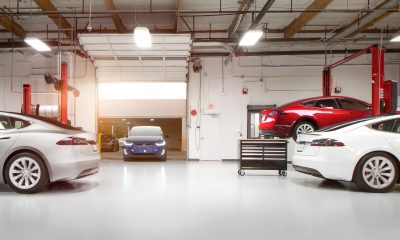
 News2 weeks ago
News2 weeks agoTesla just made Service even easier and more convenient
-
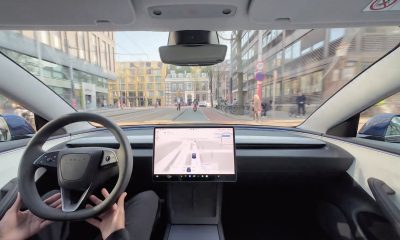
 News2 weeks ago
News2 weeks agoTesla Full Self-Driving’s new version officially gets a wider rollout
-
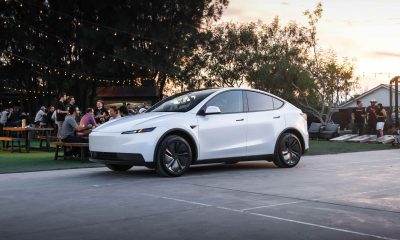
 News2 weeks ago
News2 weeks agoTesla makes crazy move to spur short-term demand in the U.S.
-
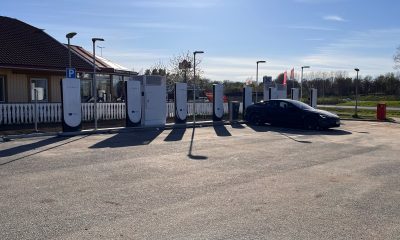
 News2 weeks ago
News2 weeks agoTesla Sweden faced with fresh strike from elevator company
-
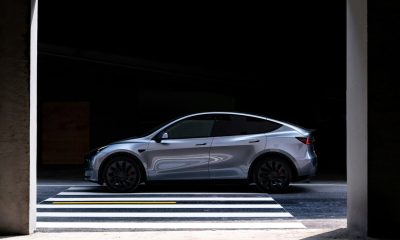
 News2 weeks ago
News2 weeks agoKia and Tesla top list in Swedish study of strongest EV batteries
-
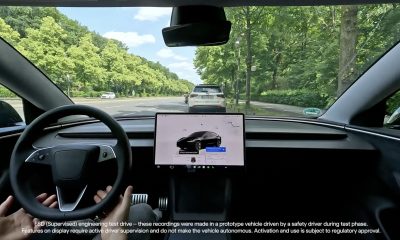
 News2 weeks ago
News2 weeks agoTesla is looking to conduct FSD tests in new Swedish city: report
-
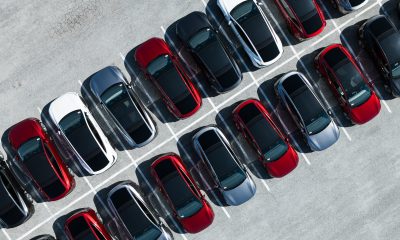
 Investor's Corner2 weeks ago
Investor's Corner2 weeks agoTesla analyst says this common earnings narrative is losing importance


